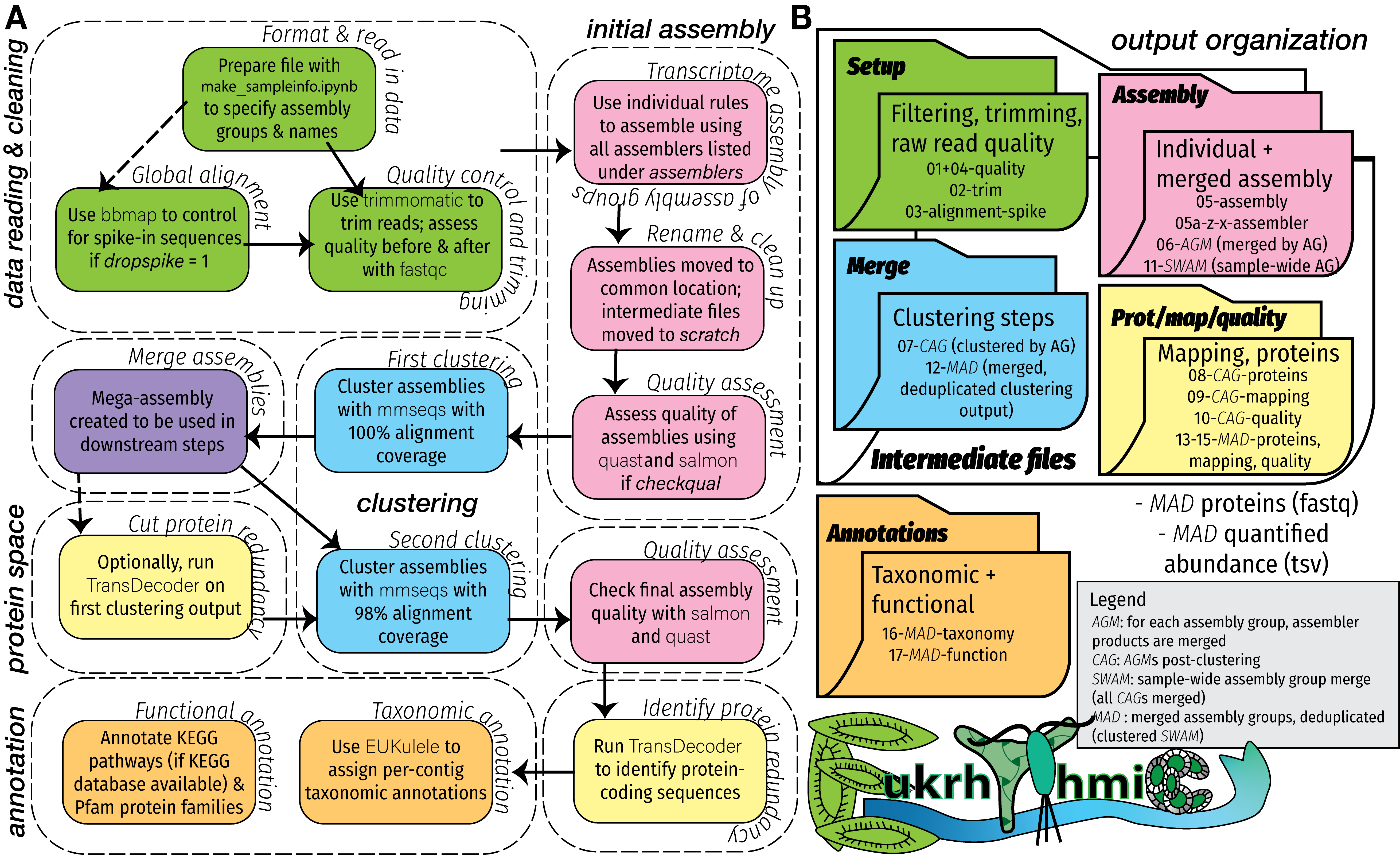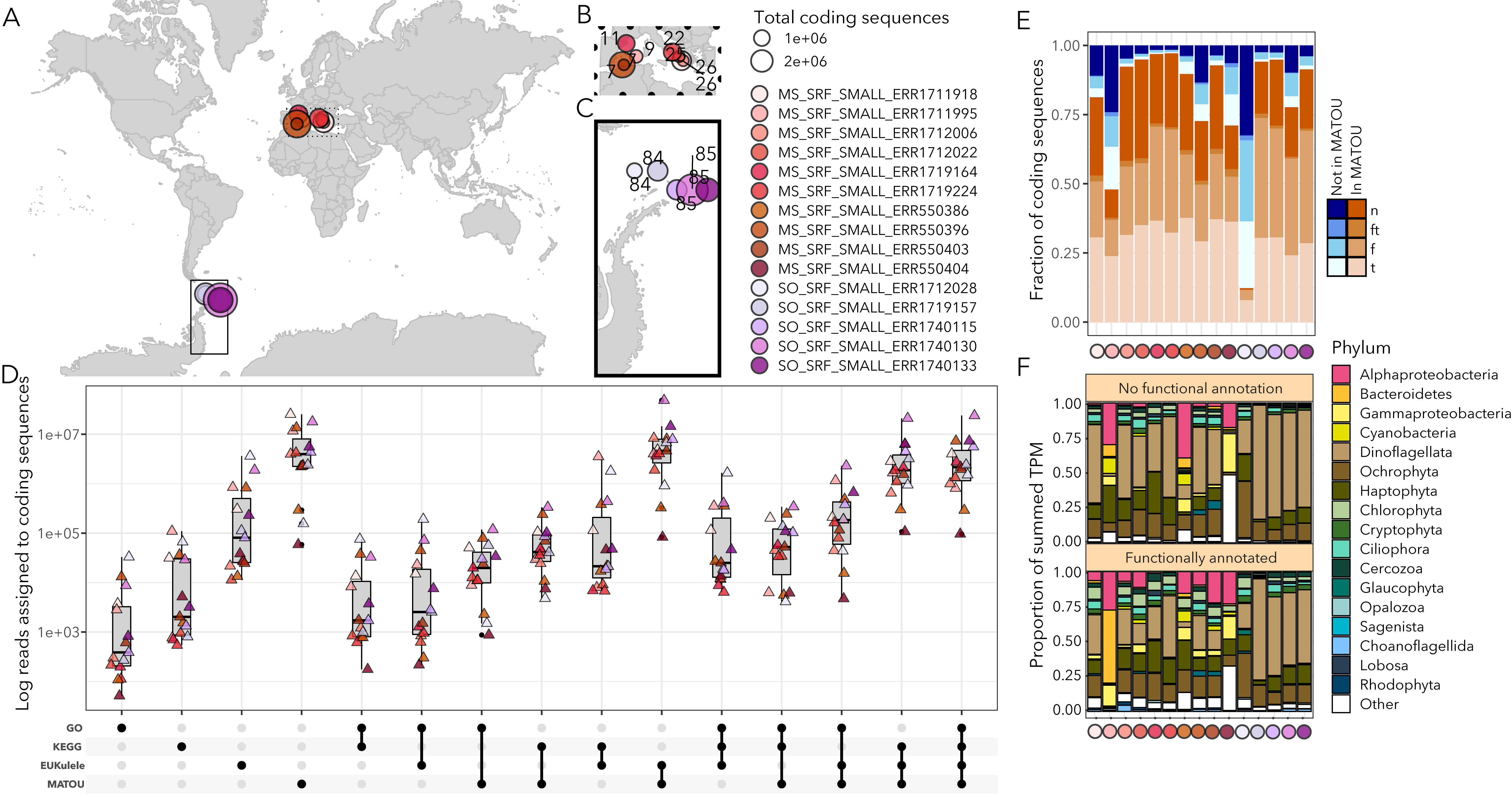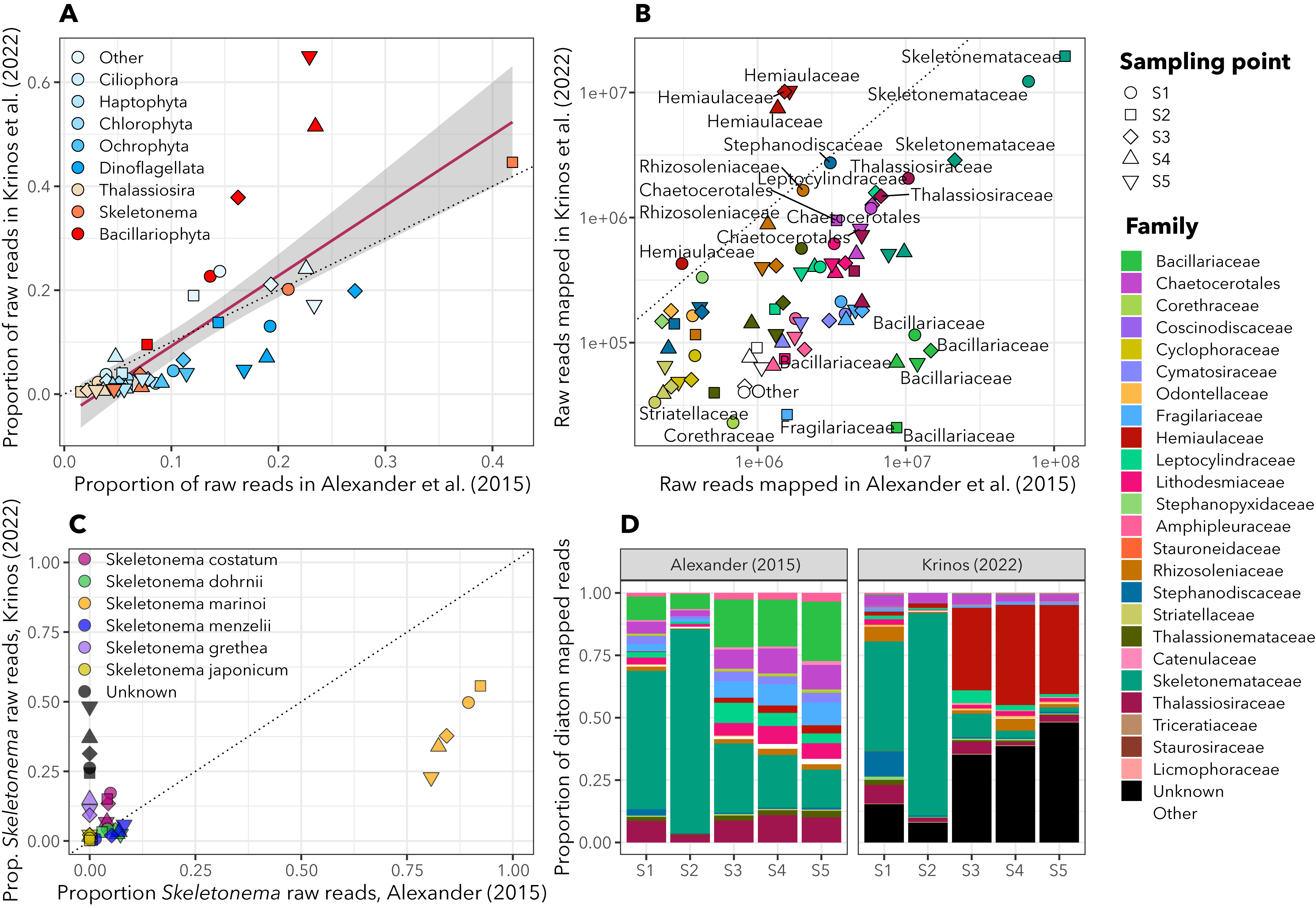projects
Projects towards ecosystem effects of phytoplankton diversity
At the intersection of culturing & models
Physiology experiments to study multiple stressors & interactions
The vast molecular diversity of phytoplankton and other protists can be tied to large-scale processes and nutrient biogeochemistry via physiology. Physiology experiments track the rate of population growth, nutrient use, or metabolite production by isolates or communities. I design physiology experiments to link genetic diversity, for example strain differentiation in the cosmopolitan coccolithophore Gephyrocapsa huxleyi, to traits that models can be parameterized with, for example thermal niche width or habitat.
At the intersection of -omics & models
Ecology & evolution of marine microbial eukaryotes
Marine microbial eukaryotes have complex genomes that are difficult to reconstruct from environmental data, and individual cells can be challenging to culture in the laboratory. Using -omics approaches, we can now study the inter- and intraspecific diversity in biogeochemically-relevant strains of marine protists. My current projects on this topic include:
- Extracting genes from novel lineages from meta-omic data using clustering approaches
- Studying strain specificity and pangenomic variability in cosmopolitan phytoplankton taxa (Gephyrocapsa huxleyi)
Marine landscape microeukaryotic meta-omics
The field of omics has quickly exploded into one of the most popular routes of biological inference. And this is for good reason: omics studies are powerful, and, increasingly, they are fast and cheap. However, the development of omics tools tends to be biased, in particular for microbes. The momentum is lost as the technology rapidly changes, and the front line of researchers quickly moves on to the latest and greatest. For this reason, bacteria get a disproportionate amount of attention as technologies develop, and tools for genomes are much more abundance than tools for transcriptomes.

But metatranscriptomics, or the measurement of the expression levels of an entire community from a single sample, has an important role to play in microbial oceanography. We often can only get a single sample easily, and there’s an enormous amount of uncultured diversity present in those samples. For that reason, marine metatranscriptomics have massive potential both to tell us about organisms that we aren’t able to cultivate in the lab, and to tell us how the expression of various genes changes over time. This simultaneously tells us what microbes are present in a sample, and what biogeochemical roles they might be performing.

I am interested in marine microbial eukaryotes, or protists, which present the secondary challenge that a lot of -omics tools are not developed for eukaryotic organisms. For this reason, I have developed eukrhythmic, a metatranscriptomic pipeline that consolidates the output of multiple individual assemblers to produce a cohesive assembly process that can be used for downstream analysis and posing meaningful biological and oceanographic questions. This work complements ongoing software development for accurate taxonomic identification of marine eukaryotes in meta-omic samples (EUKulele).
